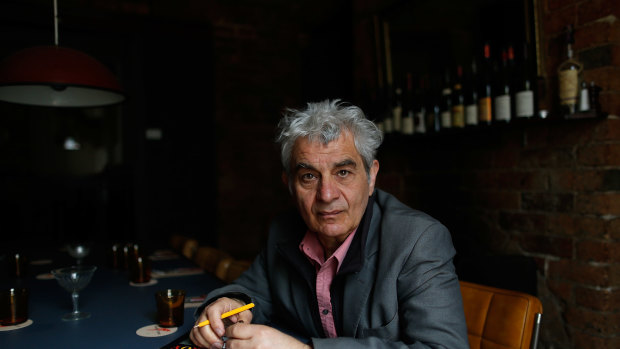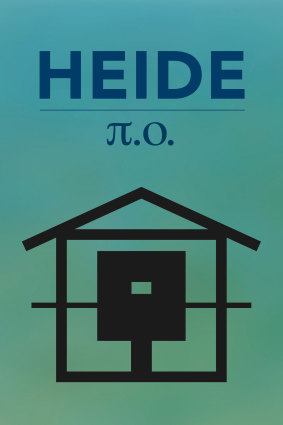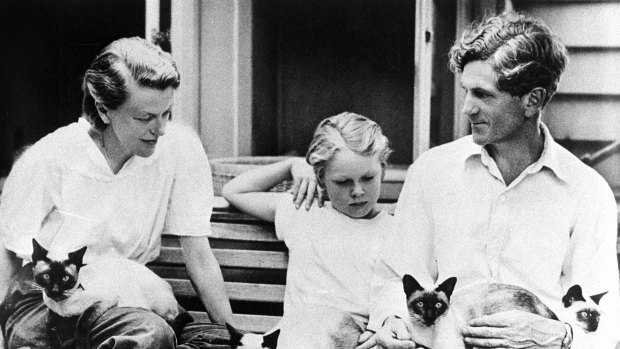By David McCooey
Poetry
Heide
PiO
Giramondo, $39.95
The Heide Circle was a group of artists gathered around John and Sunday Reed at their property (now a museum of modern art) near Melbourne. Such artists included Sidney Nolan, Albert Tucker, and Joy Hester, and they have been much written about in recent decades. But no-one has written about them in the way PiO writes about them in his new epic poem, Heide, which completes the trilogy begun with 24 Hours (1996) and Fitzroy (2015).

There is nothing solemn about PiO's monumental epic, Heide.Credit: Meredith O'Shea
Like those previous works, Heide is vast, digressive, stylistically idiosyncratic, and profoundly interested in the relationship between space and time. In Heide, however, PiO takes on a different milieu. Rather than the urban working class, here he is concerned with the more (though not entirely) bourgeois world of the Melbourne art scene. But his focus is incredibly broad.
Heide begins with the pre-colonial and colonial history of Melbourne, and the earlier Heidelberg School of Australian impressionism. The book also takes in countless other related figures and events, including Ned Kelly, World War II, the Ern Malley Affair, and the author’s own experiences, such as meeting the doomed adopted son of John and Sunday Reed, Sweeney, who — like PiO — had an interest in ‘‘visual poetry’’.
While concrete poems appear in Heide, most of the book consists of catalogue poetry. Heroically written in the indicative mood, Heide contains more than 200 poems, most of which are biographical, and the vast majority of which are made up of declarative sentences.

Credit:
For instance, Elizabeth Paterson begins: ‘‘The sense of touch, preceded / that of sight. In 1735 Hogarth, painted / The Rake’s Progress, in 8 separate panels. / A priceless masterpiece becomes worthless, if found / to be a forgery. Sidney Nolan met Elizabeth Paterson at / the National Gallery, a striking beauty, and / a good Artist, struggling like everybody else to / develop a style.’’
If this doesn’t sound like your cup of tea (an aromatic beverage), then it probably isn’t. But if you are up for a unique book-length poem-sequence that powerfully rewrites well-trodden bits of Australian history, then it deserves your attention.
Heide is a giant list of facts (or pseudo-facts). These facts are not simply biographical, but also mathematical, socio-linguistic, anatomical, astronomical, zoological, and so on. These facts have various functions. As well as being central to the poetic idiolect of Heide, such facts can implicitly comment on the subject at hand. (Sidney Nolan could be considered a ‘‘rake’’, hence the reference to Hogarth’s The Rake’s Progress.)
As well as serio-comically editorialising on the many characters and narratives within Heide, the citing of facts from a discrete body of subjects makes the poem a giant fugue, weaving repeating abstract ‘‘themes’’ through the narrative material. In their semi-quotational condition, the facts give the poem the appearance of a vast modernist bricolage or montage, like a work made up of found texts.

Sunday and John Reed, with their adopted son Sweeney, at Heide in the early 1950s.Credit:
There is nothing solemn about Heide. While many of its characters don’t come out well (Patrick White and Nolan, for instance), and while sympathy is shown for other characters (usually women), Heide is notable for its irreverent spirit, and for its refusal to respect social hierarchies. In this regard, it is a corrective for the numerous works of art history that treat the Heide circle with a solemnity the subjects don’t always deserve.
In any case, Heide is as much an exercise in style as it is an account of modern Australian art, and this style is notable for its comic excess. There are lots of gags in Heide. For instance, after more than 200 pages of eccentric comma usage, we are given this: ‘‘The comma, is a punctuation mark.’’ And while the phrase ‘‘Viva la blague!’’ (Long live the joke!) appears in a poem about mid-century anti-modernist sentiment, the phrase could well stand for the work as a whole, even as that work asserts the importance of art.
PiO has often presented himself as ‘‘anti-academic’’. Despite the apparent ‘‘citational poetics’’ at work in Heide, the book conspicuously lacks any academic apparatuses. (No footnotes! No list of works cited!) PiO is, of course, not the first writer to strategically distance himself from the academy. Les Murray, about whom PiO wrote so dubiously earlier this year, similarly made anti-academic statements on occasion. But like Murray, many of PiO’s greatest admirers are academics. It is notable, too, that Heide is published by Giramondo, which is auspiced by Western Sydney University.
PiO’s biographical note in Giramondo’s publicity states that ‘‘he has never won an award’’. It’s possible Heide will bring an end to that distinguished condition.
David McCooey’s most recent book of poetry, Star Struck, is published by UWA Publishing.